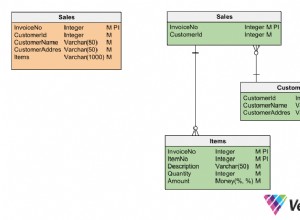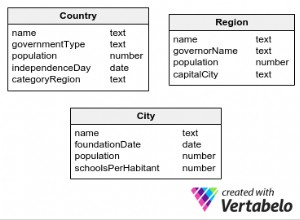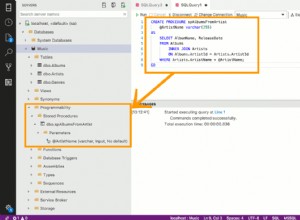Para obter o resultado desejado, você precisará unpivot os dados atuais das colunas em linhas e, em seguida, gire o
year dados de linhas em colunas. MySQL não tem uma função PIVOT ou UNPIVOT, então você precisará usar um
UNION ALL query para unpivot e uma função agregada com um CASE expressão para pivotar. Se você tiver um número conhecido de valores, poderá codificar valores semelhantes a este:
select locid,
event,
max(case when year = 2011 then value end) `2011`,
max(case when year = 2012 then value end) `2012`
from
(
select LocId, Year, 'Birth' event, Birth value
from yt
union all
select LocId, Year, 'Death' event, Death value
from yt
union all
select LocId, Year, 'Abc' event, Abc value
from yt
) d
group by locid, event;
Consulte SQL Fiddle with Demo .
Mas se você tiver um número desconhecido de valores, precisará usar uma instrução preparada para gerar SQL dinâmico. O código será semelhante ao seguinte:
SET @sql = NULL;
SET @sqlUnpiv = NULL;
SET @sqlPiv = NULL;
SELECT
GROUP_CONCAT(DISTINCT
CONCAT(
'select locid, year, ''',
c.column_name,
''' as event, ',
c.column_name,
' as value
from yt '
) SEPARATOR ' UNION ALL '
) INTO @sqlUnpiv
FROM information_schema.columns c
where c.table_name = 'yt'
and c.column_name not in ('LocId', 'Year')
order by c.ordinal_position;
SELECT
GROUP_CONCAT(DISTINCT
CONCAT(
'max(CASE WHEN year = ',
year,
' THEN value else null END) AS `',
year, '`'
)
) INTO @sqlPiv
FROM yt;
SET @sql
= CONCAT('SELECT locid,
event, ', @sqlPiv, '
from
( ', @sqlUnpiv, ' ) d
group by locid, event');
PREPARE stmt FROM @sql;
EXECUTE stmt;
DEALLOCATE PREPARE stmt;
Consulte SQL Fiddle with Demo . O resultado para ambas as consultas é:
| LOCID | EVENT | 2011 | 2012 |
-------------------------------
| 1 | Abc | 10 | 20 |
| 1 | Birth | 100 | 98 |
| 1 | Death | 60 | 70 |




